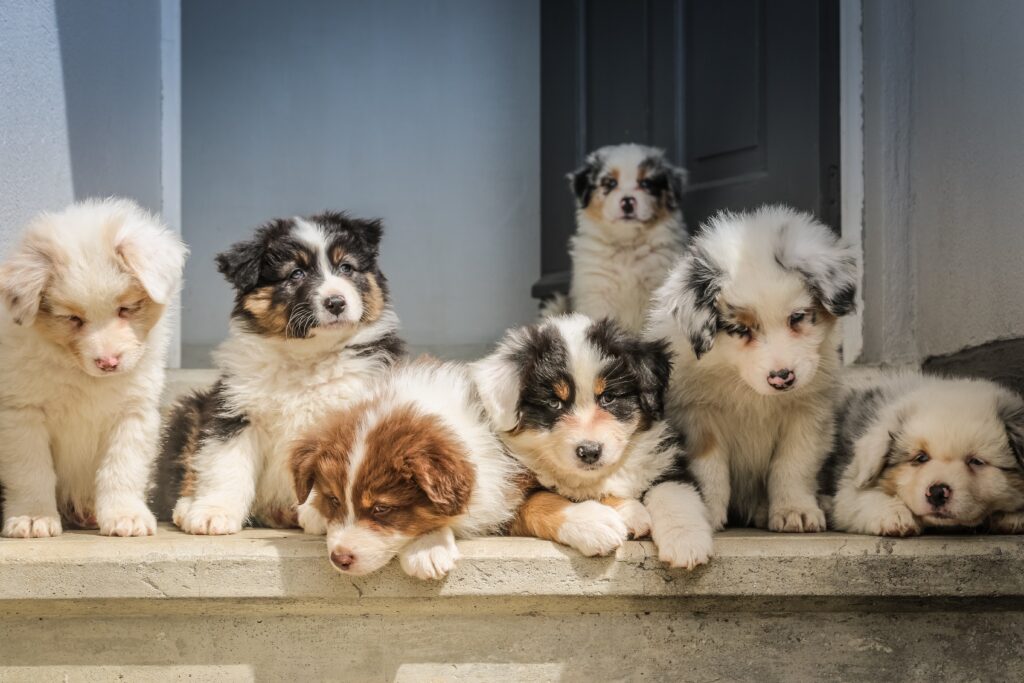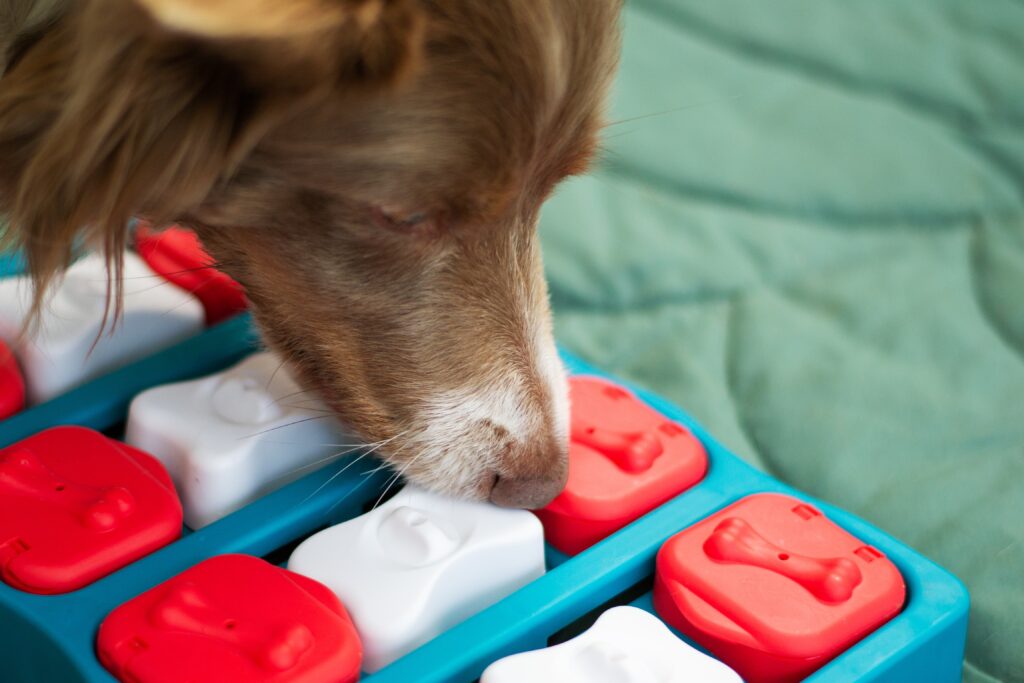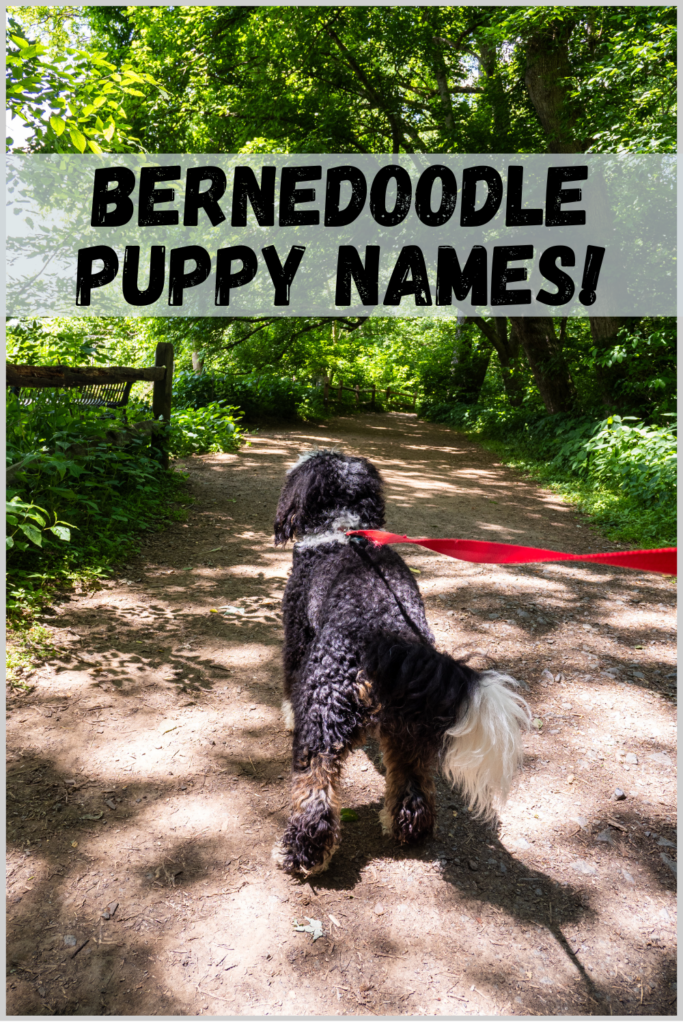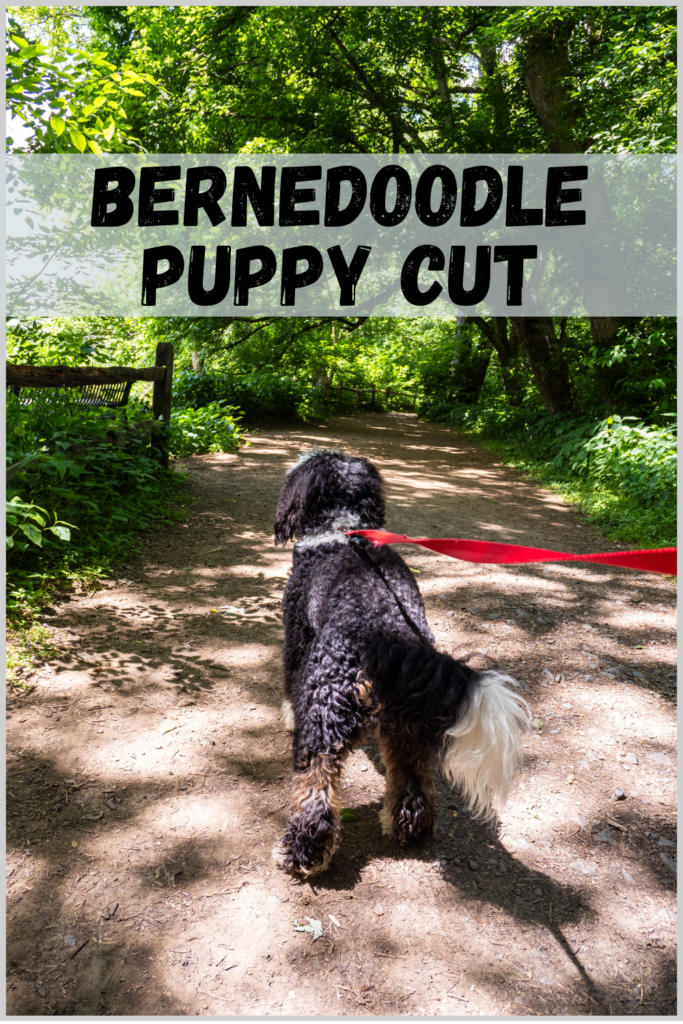
ULTIMATE Dog Nutrition Guide: 17 Things New Dog Owners Should Know
Are you planning on welcoming a puppy soon and don’t know where to begin when it comes to dog nutrition? This ULTIMATE dog nutrition guide will go over 17 things you need to know. From what type of food you should be feeding to habits that should be learned early on, we have got you covered!
There is a lot of information to sift through out there. Therefore, we always aim to share updated research-based information to help dog owners make the most well-informed decisions for their pups.
This post is the ULTIMATE dog nutrition guide for new dog owners!

#1: Big Responsibility
Getting a dog is no joke. They come with a lot of responsibility… Something that shocks you a bit when you’ve never had a dog (or kids!) before. You are going to raise this pup for, on average, 10-13 years!
Feel like not cooking? Well, remember you must feed your dog now. Feel like going out with your friends? What is your dog going to do during those hours? It definitely taught me how to be more responsible as a new grad out of college!
#2: Can Get Expensive
Your dog’s nutrition is as important as you make it. The more you learn about dog nutrition, the more options you’ll inevitably learn about for feeding your furry friend.
Similar to dealing with our own nutrition, buying ‘organic’ is usually more expensive than non-organic, but boasts more health benefits like fewer pesticides and bacteria. Your pup’s nutrition is no different. Know that higher quality foods tend to be more expensive, yet can boast more nutritional value. It’s about finding balance as a new dog owner. Maybe you stick with something you can comfortably afford now, and upgrade whenever possible!
#3: Is Dry Dog Food (Kibble) Really That Bad?
Why does kibble get such a bad rep? It begins with the cooking process. Kibble was initially introduced as an easy alternative to fresh food, that toots a longer shelf life and easier handling. In order for this to be true though, the food goes through a cooking process called extrusion.
It is now known, after many research studies, that the heating process reduces the protein quality, as well as reducing the heat-labile vitamins, such as Vitamin C. This means that when a dry dog food brand boasts a high amount of protein, it usually does not refer to the amount of protein that is directly given to your dog.
It also means that if the ingredient list boasts a lot of synthetic vitamins, some are completely lost in the heating process.
However, times are definitely changing. Dog food brands are catching on. Dog food brands are adding more protein and vitamins through whole foods and large-name meats. Instead of adding ‘Vitamin X’, they are adding foods like mushrooms, which include high amounts of ‘Vitamin X’. Instead of only chicken, they are adding more protein and organ meats as the first few ingredients. There are also brands now that add freeze-dried meat, which never goes through the cooking process! Some examples are:
So… is kibble really that bad? No. Looking over the ingredient list and making sure that you are choosing the right dog food for your pup’s specific needs is more important. There are a lot of great kibble options out there, and choosing one can really be beneficial for your lifestyle.

#4: Fresh Food or Kibble?
Boy… this one gets people going! However, choosing fresh food versus kibble comes down to the time and money you want to put into your dog’s nutrition.
The argument is that fresh food, whether it’s homemade or shipped to you, is overall healthier with better nutrient value and absorption. People also talk about how you are in complete control over everything your dog is eating. There are no fillers or excess amounts of grains that you sometimes see in kibble.
However, it also comes down to if you want to make fresh homemade food. It can be both time-consuming and hard to make sure your pup is getting the right nutrients. In a study analyzing homemade dog food diets, 48% of families followed NO specific nutrient guidelines and every single recipe had at least 1 nutrient deficiency…
Not to mention, you spend $100+ to get the fresh food shipped to your door.
So, if you’re choosing between giving your new dog fresh food versus kibble, you must consider how much time and money you want to put in. Especially with a new puppy, getting the right nutrient profile is extremely important for their development!
#5: Cooked Food or Raw Dog Food?
The idea of raw dog food has increased in popularity in the recent decade. It stems from the idea that dogs used to eat differently before they were domesticated. It is sometimes referred to as the evolutionary diet, which includes raw meat (bones and organ meats included), vegetables, and everything in between, mimicking what they ate in the wild.
It’s said that raw meats, organ meats, and bones have all the nutrients your dog needs. It is proven that the nutrients are absorbed better, which means they have better, fewer poops, and less stomach issues. Dog owners who feed their dogs raw food diets also often report a wide variety of benefits like a shinier coat and increased energy, though there have not been enough studies to prove this.
Recent studies have shown that there is a real issue with microbiological hazards. Studies show that due to biological changes and lifestyle changes compared to their ancestors, they have seen more cases of dogs getting sick, as well as their owners getting sick due to raw food handling issues. They also prove that these bacteria are resistant to important antibiotics. Not to mention, the effects of exposure from shedding these bacteria to those living near and around them!
Though these cautions are toward microbiological hazards, it doesn’t mean that finding reliably sourced, high-quality raw meat for your dog is a bad idea. There are services now that will send balanced and complete raw dog food directly to your door like We Feed Raw. Though, this is one of those things that can get really expensive as well. Adding 50% kibble and 50% raw dog food can be a more affordable alternative!
There are many benefits, some subjective and others well documented, that make a raw dog food diet attractive. If you choose to feed your dog a raw diet, always introduce raw dog food slowly, especially to your new pup who still developing and might have a sensitive stomach. Also, ALWAYS take caution and learn how to handle raw dog food and everything associated with feeding a raw dog diet.
#6: Grain-Free vs Grain-Inclusive?
It wouldn’t be a proper dog nutrition guide if it didn’t include some controversial topics!
Grain-inclusive was the standard for quite some time. It was not until the low-carb health trend among humans did we even considered giving our dogs grain-free food.
Though it boasts a lot of benefits including increased protein quality and quantity, it was then determined that grain-free diets were linked to a rising number of heart diseases, specifically dilated cardiomyopathy (DVM), among dogs. This prompted many veterinarians to again, recommend grain-inclusive diets. These diets included common grains like wheat, corn, or soy.
After much research into this topic, it turns out that there is not much evidence to prove that Grain-free diets cause dilated cardiomyopathy (DVM). Due to multiple factors like genetic influences, breed predispositions, and other study controls, it is not clear whether it is the actual grain-free aspect that caused the increase in dogs with DVM, versus maybe another ingredient that needs to be studied further.
Knowing that, finding a grain-free diet does not mean there are no carbohydrates. Carbohydrates are an important part of your dog’s diet, giving your dog the energy they need to survive and thrive! Grain-free diets often include other options like legumes, peas, and sweet potatoes.
When choosing to go grain-free versus grain-inclusive, you can’t go wrong with either. When choosing the right food for your dog, it all depends on the ingredient list and what your specific dog’s nutrient needs are.
I’ve noticed that grain-inclusive diets seem to have grains themselves as some of the first few ingredients on the ingredient list, meaning they are a substantial part of that specific food. Though carbohydrates are necessary, you should aim for proteins as the first few ingredients of your dog food, as protein should always be the majority of your dog’s diet. We choose grain-free for Jill, now that she is considered an adult dog!
#7: Homemade or Shipped to you?
Choosing between a homemade diet versus having the food shipped to you is a big debate. It also greatly depends on how much money you want to spend and how much time you want to put in.
I cannot lie that having food shipped to you can be so hassle-free! You don’t have to worry about making anything yourself and can relax knowing that you are giving your dog complete and balanced fresh food.
We had a major issue with the mail services getting the food to our door! Long story short: we ALWAYS had to order replacement meals, as the packages were spoiled by the time they got to us…
Homemade food needs more research and time, but you have full control over what your dog is eating. You can adjust accordingly to their specific needs and tends to be MUCH cheaper. However, it is much harder to make sure every meal is balanced and nutrient-dense, which is something to consider.

#8: Feeding Times
When it comes to feeding times, there are 2 main different feeding types: free feeding and scheduled feeding.
Free feeding is when you leave the food out for your dog to eat whenever they choose to. This could be beneficial if you cannot be home at certain times to feed your dog.
Scheduled feeding is when you set specific times for your dog to eat every day, whether that be once, twice, or three times a day. This is the generally preferred method, as you are able to control the amount of caloric intake your dog gets every day.
There are also different recommendations for dogs of different sizes and at different life stages. Larger breed puppies should be fed 3 times a day until they are an adult. Whereas, a smaller breed puppy might need more than 3 feedings per day until they are an adult. This is due to factors like preventing hypoglycemia, digestion rate, and their developing metabolism.
When we first got our puppy, we DID NOT know anything about free feeding versus scheduled feeding. We knew to feed our pup at scheduled times but never took the bowl away even when she wouldn’t finish. She would, often times, come back a few hours later and finish, but never thought anything big of it… We accidentally gave her a free feeding schedule, and made her an extremely picky eater! She got into the habit of not eating everything during her scheduled feeding times and it was a big mess. We had to very strictly enforce a feeding schedule for a few weeks to reverse this.
On another note, some dogs are just picky eaters. Whether it be they are puppies or something more serious like a dog food allergy if your pup is not eating, always consult your veterinarian!
#9: Amount to Feed
This one might seem unnecessary, but is important to know nonetheless. Use the labels on your dog’s food label as a guideline. It is not a hard and fast rule and should be adapted to your specific dog’s needs. My dog is a very high-energy dog, and that should be accounted for when portioning out her food.
The same goes for the opposite side of the spectrum. If your dog is not getting as much exercise, you should consider reducing the amount of caloric intake for your pup.
This becomes even more important when choosing a homemade diet, and when giving food toppers, treats, and other snacks throughout the day. Start by calculating the daily caloric intake that is specific to your dog’s measurements like weight, size, and whether they are intact or not. Use that number to calculate daily caloric intake, which includes their meals, snacks, treats, etc.
#10: Supplements
The Association of American Food Control Officials (AAFCO) plays a big role in commercial dog food and the minimum nutrient requirements for animals to survive. They are not able to regulate dog food but have set the guidelines for what is and what is not allowed. By promoting a dog food brand as ‘complete and balanced’, they must follow these guidelines. When looking for dog food brands, look for the nutritional adequacy statement, which should state it is a ‘complete and balanced’ formula. Though this is definitely a great starting point, there are a lot of flaws.
First and foremost, they require only the MINIMUM amounts, not the most optimal amounts. They also do not factor in hydration, which is very important for your dog’s health! Signs of dehydration can be very alarming. And lastly, they do not have any requirements for Omega-3 fatty acid requirements, as one of their nutrients. Omega-3 fatty acids are SO amazing for dogs, but it is not necessary, per se for them to survive.
Therefore, supplementing by adding food toppers or supplements in general can be very beneficial for your pup’s health. Some supplements to consider are fish oil/fish products for Omega-3 fatty acids, joint supplements for bone and joint health, and probiotics such as kefir, yogurt, or other probiotic supplement products.

#11: Treats & Chews
Once you get your pup, it does NOT take long before your pup starts chewing… on EVERYTHING. Therefore, investing in chew toys and natural edible chews can be very beneficial.
However, note that there is a very small list of chews that can be given to your young pup. Chews can be large and/or tough, which could potentially break their teeth, so tread lightly and always monitor. Remember to always add this to their caloric count for the day as well! It’s a great habit to get into for monitoring their health as they get older.
#12: Enrichment Toys
Dogs NEED mental stimulation, along with exercise. It’s when they get bored, that they have destructive tendencies. If your pup has not gotten all of their vaccines, it might be hard to get enough exercise outside of the home. However, you sure can tire them out with mental stimulation games. This could include lick mats, toppls filled with food, or a puzzle for your pup to find all the treats.
Always start easy, so your pup does not get discouraged and quit. It’s really fun and they sleep for the next 3-4 hours without a peep.
#13: Eating Human Food
Many may say that this should NOT be allowed, but they only live for so many years! Let them taste it, but only in small quantities, and always follow good food practices!
- If your food has a lot of salt or other toxic ingredients like garlic, only give a small piece or none at all.
- Protein > All other foods
- Stop if you notice any stomach upset symptoms including diarrhea or vomiting
- Practice only giving food when they are behaving (we always ask Jill to be ‘down’)
- We have a big dog, and when she sits up, her head reaches the table! We only let her try when she is in a down position.
This topic can be very controversial! There are many reasons to NOT give them human food, but I can’t say no!
#14: Dog Food Allergies
Dog food allergies are uncommon, however, not impossible. Learn to identify common dog food allergy symptoms and how to diagnose their allergy now. Some symptoms include:
- Itchy Skin and Paws
- Digestive problems
- Ear Infections
- Respiratory Distress
- Hair Loss
Note that the common GI symptoms are similar to digestive issues associated with allergy symptoms. Allergy symptoms can also be very similar to allergy intolerance symptoms.
#15: Storage of Food
Though it may not look like it, your dog’s food is fresh, cooked food. It should be stored according. Good food storage practices include leaving your dog’s food in their original packaging, and storing it in an airtight container, to limit outside air exposure.
It should be stored in a room temperature room with no excess heat. Folding over the food and putting a clip IS NOT enough! This will ensure your food stays fresh for longer, and deter bad agents like mold!

#16: Finding a Good Veterinarian
I can’t emphasize this enough! When getting a new pup, not only is your vet your best friend during the puppy stages & getting vaccines, but they become your best resource for everything as they grow. This is why I want to emphasize the importance of finding a good veterinarian that your pup loves and grows with!
There are two trains of thought: find a big vet with less attention to your pet, but better resources OR find a small vet with greater attention to your pup, but less up-to-date resources.
We always choose smaller vets. We’ve tried both big and small vets! At the smaller vet, they gave Jill so much attention, treats, and love, that she never once even cared about getting her vaccines. She LOVES the vet and her veterinarian, and you just can’t ask for a better situation there.
The bottom line is your pup will grow with your vet. Choose one that gives them a lot of love and attention, and going to the vet will never be a chore!
#17: Brushing Teeth
I WISH I knew to start this early on! Brushing their teeth is important, people will say that they’ve never brushed their dog’s teeth or that dental chews work great. But, if you’re like me and want to make sure your dogs getting the best nutrients, brushing their teeth could be a great way to keep their teeth clean and bellies happy! PLUS, dental chews are not suitable for puppies most of the time. Even if they are labeled specifically for puppies, they are usually specifically not for dogs younger than 9 months.
As puppies, they are so open to trying anything and everything, take time each day to teach your pup that hands around their mouth or touching their teeth is okay. It will save you hours of training in the future! However, know that EVERYONE struggles with this. A wiggling puppy does not make it any easier, so be patient with it.

BONUS: Resting after eating
Start this now! For puppies, but mostly adult dogs, there is a deadly health issue called Bloat, that can be easily avoided. Bloat happens when your dog has just eaten, their stomach is expanded, and they start running/exercising. Their stomach could potentially twist on itself. This stops all blood flow to and from, and needs medical treatment quickly!
However, this can be avoided by not letting your puppy or dog run around 30 min to an hour after their meal, the longer the better if you have a large dog breed.
Conclusion
When I first got my puppy, I wish I knew there were different nutrition diets and habits to start early on. I hope this nutrition guide was able to touch on a lot of important points when it comes to dog and puppy nutrition. Though it is extensive, there is a vast sea of information to dive into. Tread at your own risk, this dog nutrition guide is a great starting point.
Congratulations on starting this new chapter in your life!



